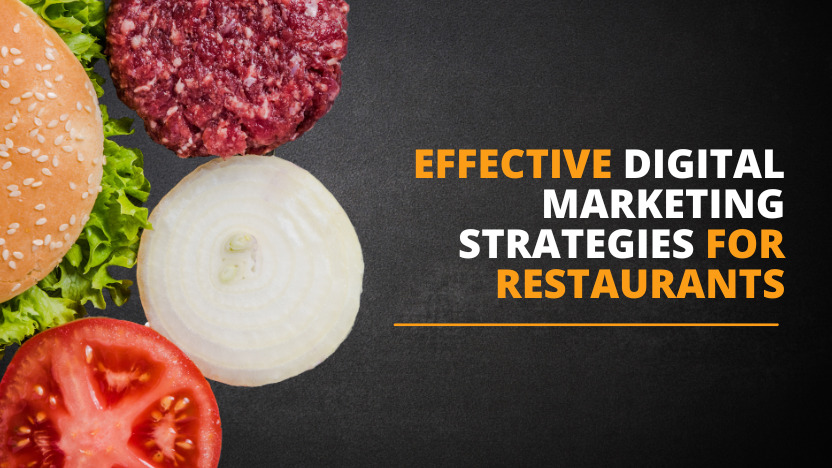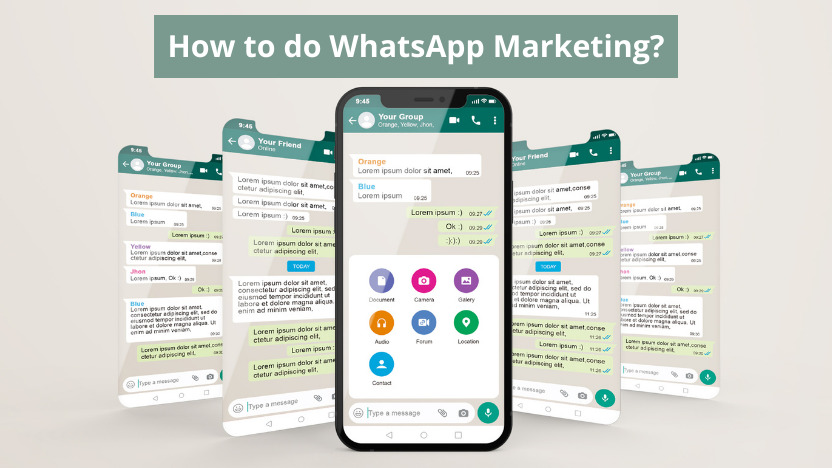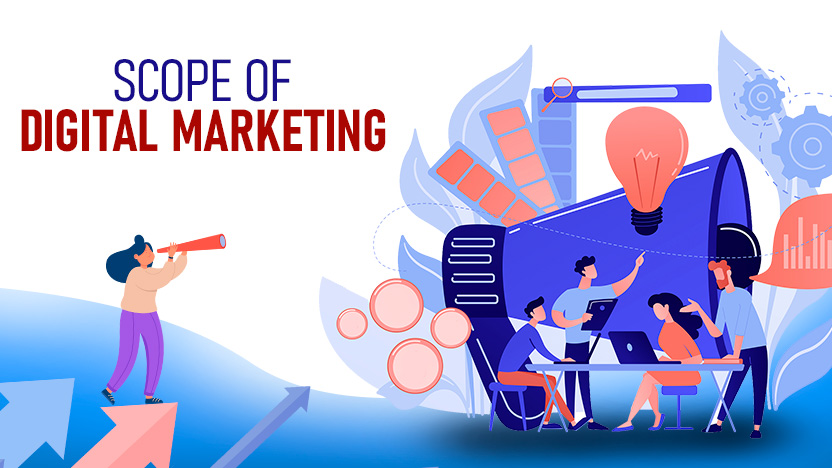In today’s world, where consumers are bombarded with ads at every turn, it’s more important than ever to create a strong emotional connection with your audience. And one of the most effective ways to do this is through storytelling. A well-told brand story has the power to capture attention, build trust, and create loyal customers. But, crafting a compelling brand story isn’t as simple as just sharing your company’s history. It requires a deep understanding of your audience and a strategic approach to messaging.
In this blog, we’ll dive into six powerful tips to help you craft a brand story that resonates with your audience and drives results. From defining your brand’s unique voice to incorporating emotional storytelling techniques, we’ll cover all the key elements of effective brand storytelling. Whether you’re a seasoned marketer or just starting out, these tips will provide you with the tools and insights needed to take your brand storytelling to the next level. So, grab a cup of coffee, get comfortable, and let’s dive in!
Know Your Audience
Knowing your audience is crucial for effective brand storytelling because it enables you to create messaging that resonates with your target market. Without a deep understanding of your audience’s needs, wants, and pain points, your brand story may fall flat, and you could miss out on the opportunity to build a loyal following.
By understanding your audience, you can tailor your brand story to their interests, challenges, and aspirations. You can create messaging that speaks directly to them, establishes trust, and fosters a sense of connection. This, in turn, can lead to increased brand awareness, customer loyalty, and ultimately, revenue growth.
Tips on how to research and analyze your audience

So, how can you research and analyze your audience to gain these insights? Here are a few tips:
Conduct surveys or interviews:
Ask your audience questions about their needs, preferences, and challenges. Use this feedback to inform your messaging.
Monitor social media conversations:
Keep an eye on social media platforms to see what your target audience is saying about your brand and your competitors.
Analyze website analytics:
Look at website data to see where your audience is coming from, what pages they are visiting, and how long they are spending on your site.
Create buyer personas:
Develop detailed profiles of your ideal customers, including their demographics, goals, and pain points.
Stay up-to-date on industry trends:
Keep tabs on what’s happening in your industry to stay ahead of the curve and anticipate your audience’s evolving needs.
By taking the time to research and analyze your audience, you can create brand messaging that speaks directly to them and drives engagement. So, before you start crafting your brand story, make sure you know your audience inside and out.
Next, you must be thinking about is it really essential to define your brand story. Well, yes!
Define Your Brand Story

Defining your brand story is essential because it sets the foundation for all your brand messaging and creates a cohesive and compelling narrative that resonates with your audience. Your brand story serves as the backbone of your brand, providing a clear understanding of who you are, what you stand for, and what sets you apart from the competition.
A brand story typically includes several key elements, including your brand’s history, values, mission, and unique selling proposition. These elements come together to create a narrative that communicates your brand’s personality, voice, and overall purpose.
Successful brand stories are those that capture the hearts and minds of their audience, establish trust, and build a loyal following. Here are a few examples of brands with compelling brand stories:
Nike:
Nike’s brand story is built around the idea of “just do it,” which speaks to its mission of inspiring and empowering athletes around the world. Their messaging is centered on the idea of pushing your limits and achieving your goals, creating a powerful emotional connection with their audience.
Patagonia:
Patagonia’s brand story is built around its commitment to sustainability and environmental activism. They communicate this through their messaging and by taking actions such as donating a portion of their profits to environmental causes, creating a loyal following of like-minded individuals.
Coca-Cola:
Coca-Cola’s brand story is built around the idea of creating moments of happiness and togetherness through its products. Their messaging is focused on creating a sense of nostalgia and connection, making them a beloved brand worldwide.
In summary, defining your brand story is essential because it sets the foundation for all your brand messaging and creates a compelling narrative that resonates with your audience. By understanding the key elements of a brand story and studying successful examples, you can create a brand story that captivates your audience and builds a loyal following.
Make It Authentic
With all this, also make sure that your story is authentic. Yes, you heard that right, you need to make it authentic. But why is that so? Well, Authenticity is critical in brand storytelling because it allows your audience to connect with your brand on a deeper level. When your brand story is authentic, it feels genuine and true to your brand’s values, personality, and purpose. This, in turn, fosters trust, builds loyalty, and creates a sense of community around your brand.
If your brand story lacks authenticity, it can come across as insincere or even manipulative, damaging your reputation and eroding customer trust. Authenticity is especially important in today’s digital age, where consumers are increasingly savvy and can quickly detect when a brand is not being genuine.
So, how can you make your brand story authentic? Here are a few tips:
Be true to your brand’s values:
Your brand story should reflect your brand’s values and purpose. Make sure your messaging aligns with these values and is consistent across all touchpoints.
Use real-life examples:
Use real-life stories and experiences to illustrate your brand’s message. This will make your brand story more relatable and authentic.
Be transparent:
Be honest and transparent with your audience about your brand’s strengths and weaknesses. This will create a sense of authenticity and trust with your audience.
Show your brand’s personality:
Let your brand’s personality shine through in your messaging. Whether you’re funny, serious, or somewhere in between, make sure your messaging reflects your brand’s personality.
Stay consistent:
Consistency is key when it comes to authenticity. Make sure your messaging and brand story are consistent across all touchpoints, from your website to your social media channels.
In summary, authenticity is critical in brand storytelling because it fosters trust, builds loyalty, and creates a sense of community around your brand. By being true to your brand’s values, using real-life examples, being transparent, showing your brand’s personality, and staying consistent, you can make your brand story more authentic and connect with your audience on a deeper level.
Use Emotion
With all these factors, it is also important to use the emotions while Brand storytelling. As Emotions play a crucial role in brand storytelling because they help to establish a deeper connection between the brand and its audience. By invoking feelings of joy, excitement, or empathy, brands can create a powerful emotional bond with their customers, which can lead to increased loyalty, advocacy, and sales.
One of the main reasons why emotions are so important in brand storytelling is that they help to humanize the brand. In a world where consumers are bombarded with marketing messages on a daily basis, it can be difficult for brands to stand out and make a lasting impression. However, by telling emotional stories that resonate with their audience, brands can create a more personal and meaningful connection with their customers.
Examples of emotional brand stories include:
- Nike’s “Dream Crazy” campaign, which featured a powerful video of athletes who have overcome adversity to achieve their dreams. The campaign was designed to inspire and motivate people to pursue their own dreams, and it was widely praised for its emotional impact.
- Apple’s “Think Different” campaign, which celebrated the spirit of innovation and creativity. The campaign featured iconic figures such as Albert Einstein, Martin Luther King Jr., and Mahatma Gandhi, and it was designed to inspire people to think differently and challenge the status quo.
- Coca-Cola’s “Share a Coke” campaign, which encouraged people to share a Coke with friends and loved ones. The campaign was designed to evoke feelings of happiness and connection, and it was hugely successful in creating a strong emotional bond between the brand and its customers.
Be Consistent

In light of that, I wonder if it is important to stay consistent? Yes, there is a need to be consistent in brand storytelling. Consistency is critical in creating a strong and memorable brand identity, and it helps to establish trust and credibility with your audience. When a brand is consistent in its messaging, visuals, and overall tone, it creates a sense of reliability and familiarity that can lead to increased brand loyalty and advocacy.
Here are some reasons why consistency is important in brand storytelling:
Establishes brand identity:
Consistency helps to establish a clear and recognizable brand identity. When a brand is consistent in its messaging, visuals, and overall tone, it creates a sense of reliability and familiarity that can lead to increased brand recognition and awareness.
Builds trust and credibility:
Consistency helps to build trust and credibility with your audience. When a brand is consistent in its messaging, it creates a sense of authenticity and transparency, which can help to establish a stronger connection with customers.
Enhances brand recall:
Consistency helps to enhance brand recall. When a brand is consistent in its visual and messaging elements, it becomes easier for customers to remember the brand and differentiate it from competitors.
Encourages brand loyalty:
Consistency encourages brand loyalty. When a brand is consistent in its messaging and visual identity, it creates a sense of trust and familiarity that can lead to increased brand loyalty and advocacy.
Increases brand value:
Consistency increases brand value. When a brand is consistent in its messaging and visual identity, it becomes easier for customers to recognize and appreciate the brand, which can lead to increased brand value and equity.
Tips on how to maintain consistency in brand storytelling across different channels
Develop a brand style guide:
A brand style guide is a document that outlines the key elements of your brand, such as your brand values, voice, tone, color palette, typography, and imagery. This guide serves as a reference for all your communication channels, ensuring that your brand is consistently represented across different mediums.
Use a consistent tone of voice:
Your brand should have a consistent tone of voice across all communication channels. Whether you’re writing a social media post, creating an advertisement, or producing a video, your messaging should be consistent in its tone and language.
Be consistent in visual identity:
Your visual identity, including your logo, color palette, and imagery, should be consistent across all channels. This helps to reinforce your brand identity and creates a sense of familiarity with your audience.
Adapt your messaging to different channels:
While your brand messaging should be consistent, it’s important to adapt your messaging to different communication channels. For example, your messaging on social media may need to be more casual and conversational than your messaging in a formal email.
Train your team:
Consistency is a team effort, so it’s important to train everyone who is involved in creating and sharing your brand content. This includes your marketing team, social media managers, customer service team, and anyone else who communicates on behalf of your brand.
In summary, consistency is crucial in brand storytelling as it helps to create a strong and memorable brand identity, establish trust and credibility with your audience, and increase brand loyalty and advocacy. By developing a brand style guide, using a consistent tone of voice, being consistent in visual identity, adapting your messaging to different channels, and training your team, you can maintain consistency across all your communication channels.
Utilize Different Formats
There are several formats for brand storytelling, each with its own unique strengths and opportunities for engaging with your audience. Here are some of the most common formats:
Videos:
Videos are a powerful format for brand storytelling, as they allow you to combine visuals and sound to create an emotional connection with your audience. Tips for choosing the right format include determining the tone of your story and deciding on the length of the video.
Social media:
Social media is a great platform for brand storytelling, as it allows you to connect with your audience in a more casual and conversational way. Tips for choosing the right format include understanding your audience and choosing the social media platforms that they use most frequently.
Blogs:
Blogs are an effective format for brand storytelling, as they allow you to provide in-depth content that can showcase your expertise and build trust with your audience. Tips for choosing the right format include choosing a topic that resonates with your audience and creating content that is easy to read and share.
Podcasts:
Podcasts are a popular format for brand storytelling, as they allow you to connect with your audience in a more personal and intimate way. Tips for choosing the right format include determining the tone and style of your podcast and selecting the right equipment and software.
When choosing the right format for your brand story, it’s important to consider your audience and the message you want to convey. For example, if your brand is focused on visual storytelling, then video or social media might be the best format for you. On the other hand, if your brand is focused on providing in-depth content, then blogs or podcasts might be more appropriate.
To incorporate storytelling into your marketing strategy, start by defining your brand values and mission. Identify the key messages that you want to communicate to your audience and think about the most effective ways to convey those messages. Consider using a variety of formats to reach your audience, and make sure that your messaging is consistent across all channels.
Conclusion
In conclusion, brand storytelling is a powerful tool that marketers can use to connect with their audience, build brand identity, and create emotional connections with their customers. By following the six powerful brand storytelling tips discussed in this blog, marketers can create compelling stories that resonate with their audience and drive engagement and loyalty.
From defining your brand’s mission and values to choose the right format and channel for your story, these tips provide a roadmap for creating effective and memorable brand stories. By incorporating brand storytelling into your marketing strategy, you can differentiate your brand from competitors and create a lasting impact on your audience. Remember, the key to effective brand storytelling is to be authentic, engaging, and relevant to your audience. With these tips, you can unleash the power of storytelling and take your brand to new heights.














![Benefits of Digital Marketing [Tactics & Advantages] Benefits of Digital Marketing [Tactics & Advantages]](https://thirdeyeblindproductions.com/wp-content/uploads/2022/07/Benefits-of-Digital-Marketing-832-x-468.png)
![Digital Marketing Trends By Experts [2022] in India Digital Marketing Trends By Experts [2022] in India](https://thirdeyeblindproductions.com/wp-content/uploads/2022/07/Digital-Marketing-Trends-in-India-832-x-468.jpg)

